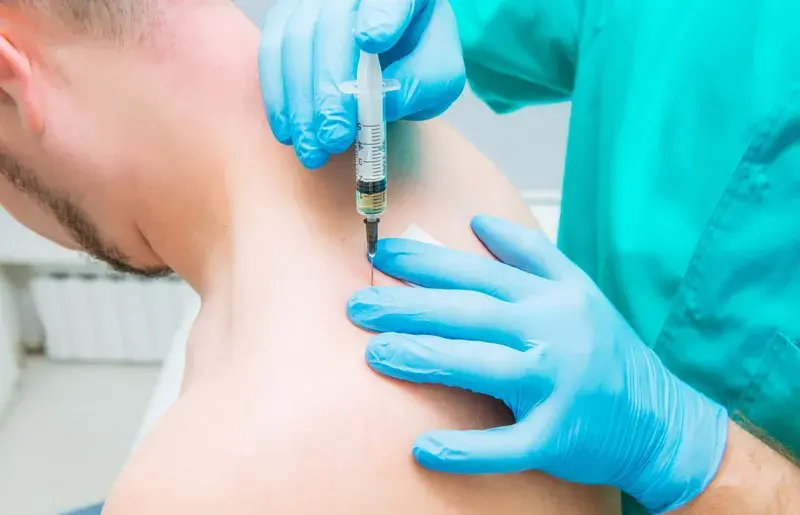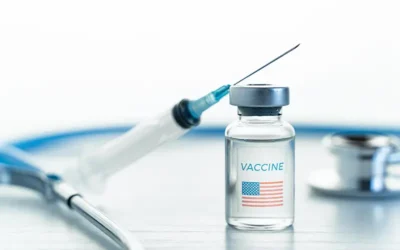Trigger point injections (TPI) are an effective treatment modality for inactivating trigger points and providing prompt relief to pain symptoms. Commonly performed by pain management specialists, orthopedic surgeons, and physical medicine and rehabilitation specialists, trigger point injection (TPI) therapy is a procedure used to treat painful areas of muscle that contain trigger points or knots of muscle that form when muscles do not relax. These points may irritate the nerves around them and cause referred pain, or pain that is felt in another part of the body. The injections may include a corticosteroid, with which the trigger point is made inactive and the pain is alleviated. TPI is used to treat many muscle groups, particularly those in the arms, legs, lower back and neck. TPI can also be used to treat fibromyalgia and tension headache, and to alleviate myofascial pain syndrome (MPS) (chronic pain involving tissue that surrounds muscle) that does not respond to other conservative treatment modalities. Successful treatment of trigger points depends on identifying each single muscle syndrome along with every perpetuating factor. As pain management medical coding is complex and tricky, most orthopedic practices rely on medical coding outsourcing to meet their requirements.
Trigger Point Therapy for Myofascial Pain Syndrome (MPS)
According to the American Society of Regional Anesthesia and Pain Medicine, Myofascial pain syndrome (MPS) is a common musculoskeletal pain disorder characterized by symptomatic myofascial trigger points that are painful upon compression. In this condition, pressure on sensitive points in your muscles (known as trigger points) causes referred pain in the muscles and in seemingly unrelated parts of the body. Typically, this condition occurs after a muscle contracts repetitively. In most cases, the upper back muscles, neck, shoulders, heel and temporomandibular joint are more prone to developing this condition. Common signs and symptoms of MPS include – deep, aching pain in a muscle, pain that persists or worsens, a tender knot in the muscles, weak or inflexible muscles and difficulty sleeping due to pain.
Documentation Guidelines
When coding for trigger point injections, the documentation must include the site of the injection, the total number of injections and the number of muscles involved. In addition, documentation must also support that various conservative therapies have been tried and failed. In many cases payers want documentation that indicates the symptoms have persisted for more than three months and the trigger points have been identified by palpation.
There are two CPT codes for Trigger point injections, which are based on the number of muscles treated –
- 20552-Injection(s); single or multiple trigger point(s), 1 or 2 muscle(s)
- 20553-Injection(s); single or multiple trigger point(s), 3 or more muscles
Local anesthesia is included in these services. However, imaging guidance can be billed in addition to the injection if necessary using the following CPT Codes –
- 76942 – Ultrasonic guidance for needle placement (e.g., biopsy, aspiration, injection, localization device), imaging supervision and interpretation
- 77002 – Fluoroscopic guidance for needle placement (e.g., biopsy, aspiration, injection, localization device) (List separately in addition to code for primary procedure)
- 77021 – Magnetic resonance guidance for needle placement (e.g., for biopsy, needle aspiration, injection, or placement of localization device) radiological supervision and interpretation
In addition, it is important to report a HCPC J code for the type of medication injected.
ICD-10 Codes Indicating Trigger Point Injections
- M79 – Other and unspecified soft tissue disorders, not elsewhere classified
- M79.0 – Rheumatism, unspecified
- M79.1 – Myalgia
- M79.2 – Neuralgia and neuritis, unspecified
- M79.3 – Panniculitis, unspecified
- M79.4 – Hypertrophy of (infrapatellar) fat pad
- M79.5 – Residual foreign body in soft tissue
- M79.6 – Pain in limb, hand, foot, fingers and toes
- M79.62 – Pain in upper arm
- M79.63 – Pain in forearm
- M79.64 – Pain in hand and fingers
- M79.65 – Pain in thigh
- M79.66 – Pain in lower leg
- M79.67 – Pain in foot and toes
- M79.7 – Fibromyalgia
Choosing the right ICD-10 codes from a huge list of codes can be complex and errors are likely. For accurate medical billing and claims submission, physicians can consider outsourcing their medical coding tasks to a professional medical billing company that provides the services of AAPC-certified coding specialists.




